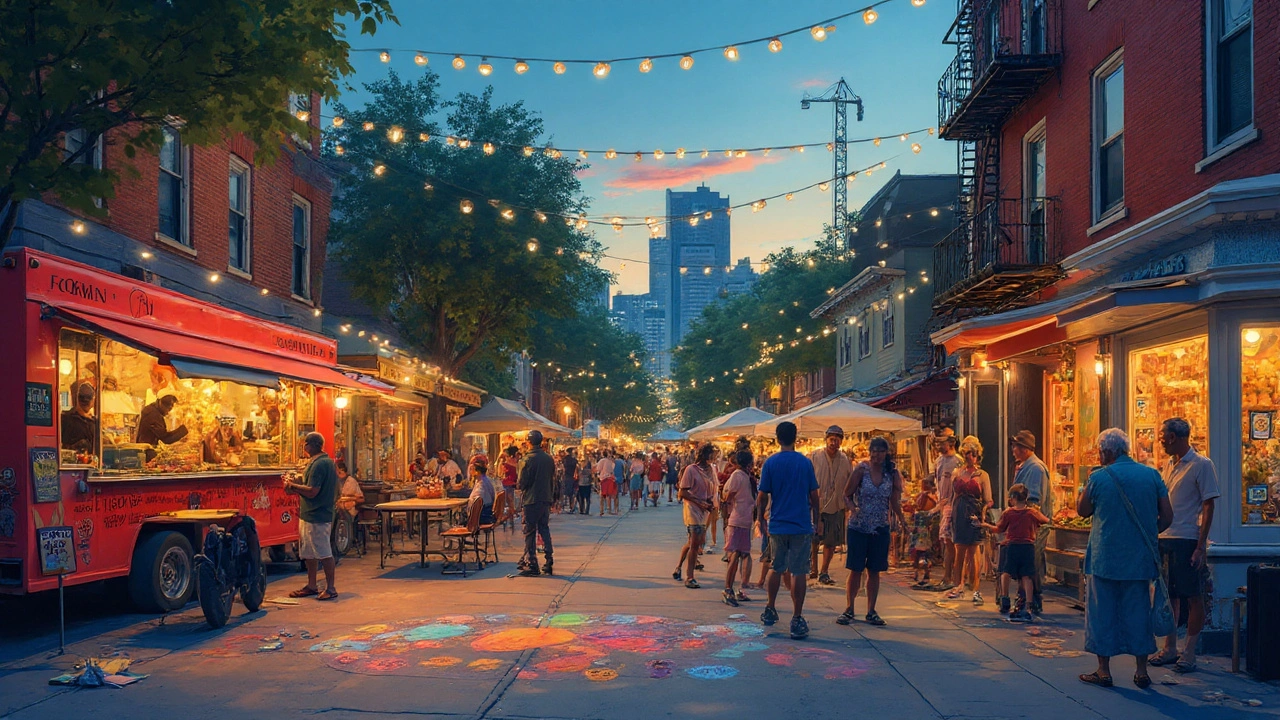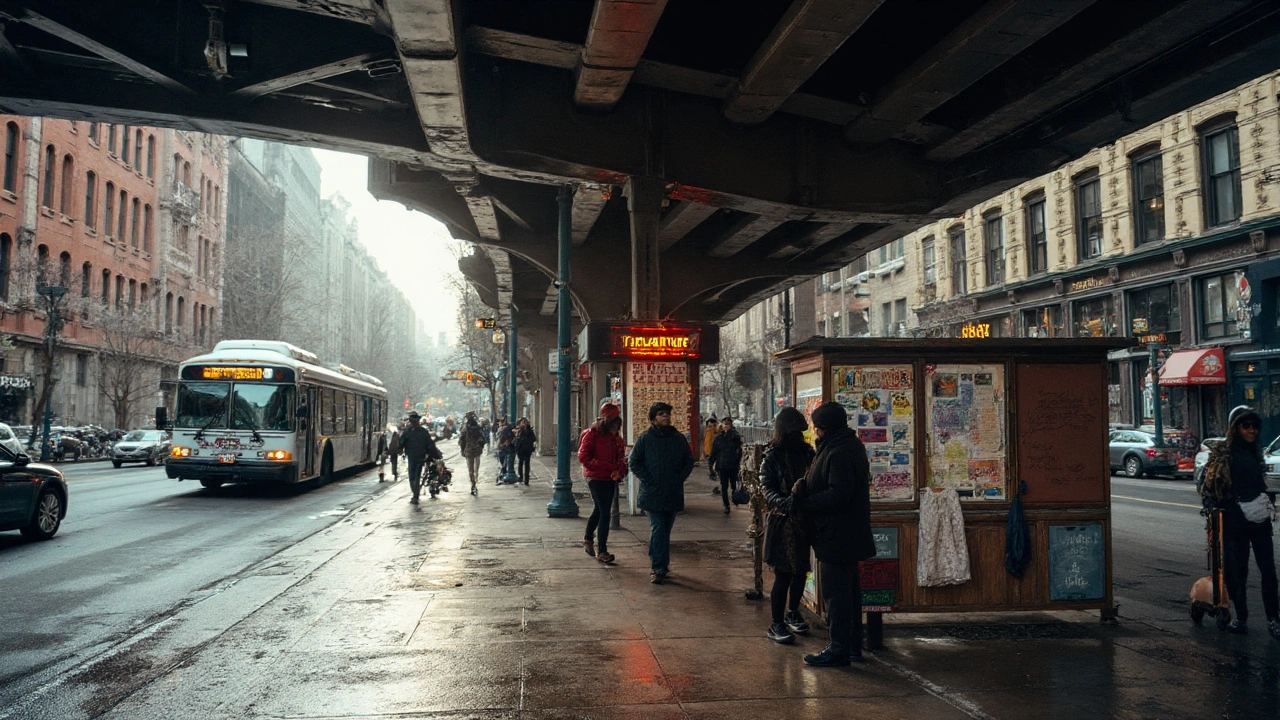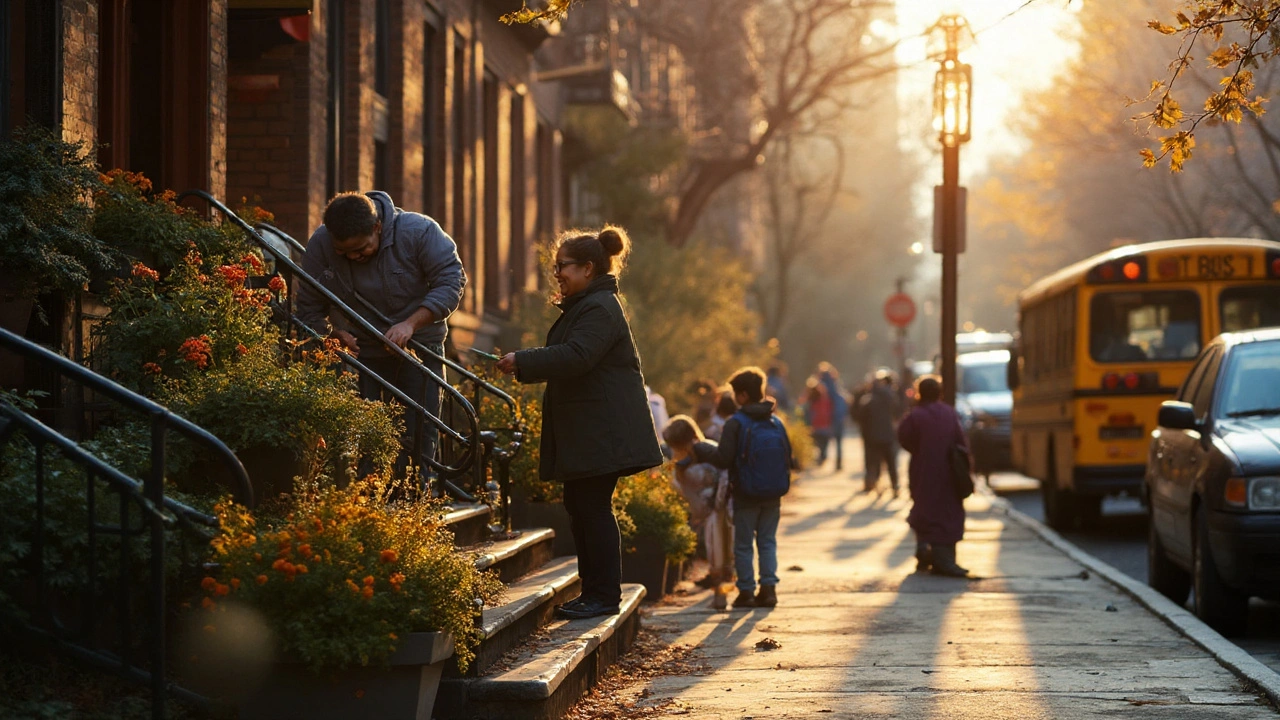- TL;DR: Cities are powered by people, networks, and routines-more than glass and steel.
- What to do today: walk at street level, ride transit, visit a park, talk to locals, and map your daily needs.
- Trade-offs exist-cost, noise, time-but simple rules keep them manageable.
- Use the checklists and benchmarks here to pick a neighborhood and build a life, not just a skyline view.
- FAQ and next steps at the end if you’re moving, visiting, or just city-curious.
If you think big city life is just tall buildings and a view from the 50th floor, you’re missing the real show. The city happens at eye level-on sidewalks, subway platforms, park benches, and bodega counters. That’s where you feel the energy, the friction, the tiny kindnesses, and the rhythms that make a crowded place feel personal. I live in New York, and the things that stick with me aren’t the skyline shots. It’s my coffee guy who knows my weekday versus weekend order, the late-night sax player under the bridge, and the woman who set a box of free books on the stoop “because her bookshelf needed a diet.”
This guide is for anyone trying to see cities as living systems, not just backdrops. You’ll get a fast way to spot the human side, a practical day plan to taste it, real trade-offs and how to handle them, and simple checklists to choose a neighborhood and settle in without burning out.
What Cities Actually Run On (Not Just Glass and Steel)
Skyscrapers are branding. The engine is people. Cities concentrate talent, services, and opportunity. That density doesn’t just add; it multiplies. The United Nations estimates that more than half the world lives in urban areas and that urbanization will keep rising through mid-century. Economists point out that dense places speed up idea-sharing, which is why they punch above their weight in jobs and innovation.
But here’s the trick: the benefits show up at street scale. When you walk a city, you see how it really works:
- Transit is the bloodstream. Subways, buses, bike lanes, and sidewalks move most people, most of the time, in very little space. That’s not just convenience-it’s how the city stays economically alive.
- Small businesses are the social network. Cafés, delis, nail salons, barbers, independent grocers, repair shops. They pass news, offer first jobs, and keep money circulating locally.
- Parks are the living rooms. A park turns strangers into neighbors. Access to green space links to better mental health; park equity groups like Trust for Public Land track this because it changes real outcomes.
- Public institutions knit it together. Libraries, schools, clinics, courts, community centers-they’re where civic life becomes practical, not abstract.
- Immigrant energy is the recharge. New arrivals bring new skills, cuisines, and hustle. Watch a city market on a weekend-languages trading hands as easily as produce.
“Cities have the capability of providing something for everybody, only because, and only when, they are created by everybody.” - Jane Jacobs, The Death and Life of Great American Cities
On a rainy Tuesday, none of this feels glamorous. You’re sprinting to catch a bus that’s two minutes early, dodging umbrellas, and debating if a bagel counts as dinner. Still, that imperfect, crowded, alive feeling is the point. Cities work because enough people are choosing to share space, time, and patience-just enough-to make a complicated thing function.
| Urban life benchmark | Target / rule of thumb | Why it matters | Source guidance (latest available) |
|---|---|---|---|
| Commute time | Under 45 minutes door-to-door | Saves ~5-7 hours/week; less burnout | U.S. Census commute data; transport studies on time-cost |
| Park access | 10-minute walk to a park | Higher activity, better mood | Trust for Public Land ParkScore, public health literature |
| Noise at night | < 40-45 dB in bedroom | Improves sleep quality | World Health Organization environmental noise guidelines |
| Housing cost ratio | ≤ 30% of take-home pay | Prevents budget squeeze | HUD and personal finance norms |
| Third places | 2-3 spots you visit weekly | Builds belonging and safety | Community health research on social capital |
Use the table as a quick gut-check. If you can keep those benchmarks in range, the city starts to feel less like a grind and more like a rhythm.
A Field Guide: One Day to See the Real City
Whether you’re visiting, apartment hunting, or deciding if city life fits you, this step-by-step day plan shows you what skyscrapers can’t. No reservations. No tourist traps. Just the human layer.
Start early, on foot (7:30-8:30 a.m.). Walk a residential street before rush hour peaks. Listen. Who’s out? Parents with strollers, dog walkers, delivery vans, construction crews? Peek at notices on lampposts and café corkboards. You’ll learn more from a lost-cat flyer than a guidebook.
Ride what locals ride (8:30-9:30 a.m.). Take the bus or subway one or two stops at rush. You’re testing reliability and crowding. Note wait times, signage clarity, and how people share space. Can you imagine doing this every weekday?
Breakfast where regulars eat (9:30-10:15 a.m.). Not the polished brunch spot. Go where orders fly without names. Ask the staff: “What’s the thing people come back for?” You’ll get the neighborhood story fast.
Park sit and watch (10:30-11:00 a.m.). Find a bench. Count strollers, seniors, and teens. Mixed ages signal a healthy area. If you see a chess table, watch a game; it’s free theater and a good measure of safety and comfort.
Errand reality check (11:00 a.m.-12:00 p.m.). Try a basic errand: grocery, hardware store, pharmacy. Is it walkable? Are prices tolerable? Can you carry it home?
Lunch with a line (12:00-1:00 p.m.). Lines mean trust. Ask the person behind you what they order. People love sharing their go-to-instant conversation starter.
Library stop (1:15-1:45 p.m.). City libraries are community x-rays. Check the bulletin board: legal clinics, language classes, art programs, story hour schedules. If the library is active, that neighborhood is investing in its people.
Work test (2:00-3:00 p.m.). If you’re remote, try a local café or coworking space. Wi‑Fi, outlets, noise levels, bathrooms. Can you focus? The city only works if your day does.
School pickup window (2:45-3:30 p.m.). Stand near a school corner (don’t be weird; keep your distance). You’ll see how the city prioritizes kids-crossing guards, bike lanes, drivers yielding or not, sidewalk space.
Golden hour walk (5:30-6:30 p.m.). This is when the neighborhood breathes. Listen for music from a bar, smell from a bakery, watch pickup basketball. If this hour feels good to you, that’s a strong sign.
Community stop (6:30-7:30 p.m.). Drop by a community board meeting, a mutual aid pantry hour, or a local meetup. Ask one question: “If I moved here, how could I help?” The answers tell you everything about the place.
Transit at night (after 9:00 p.m.). Ride one stop again. Night comfort matters. Is the platform well-lit? Are the cars reasonably full? How long is the wait?
Optional add-ons if you have a second day: visit a weekend market, try a neighborhood you think you “wouldn’t like,” and take one bus line end-to-end. You’ll map a city in your head way faster than scrolling a forum thread.

Trade-offs and How to Make Them Work
Cities give a lot and ask a lot. Instead of hand-waving about pros and cons, use these concrete rules. They’ve kept me sane through rent hikes, subway delays, and a neighbor who practices the trumpet like it’s a team sport.
Rent rule: 30% or a roommate. If rent climbs past 30% of take-home pay, share the place or change neighborhoods. Don’t rely on “I’ll just eat out less.” Rents are fixed; willpower isn’t.
Commute value math: Price your time at your hourly wage after tax. If moving closer saves 30 minutes a day round trip (2.5 hours/week), multiply by your hourly rate. If that savings roughly equals the rent difference, consider paying more to live closer.
Noise ladder: Start with felt pads under furniture, door sweeps, and heavy curtains. Add a rug. Use a fan or a white-noise app at night. If you can hear conversations word-for-word, talk to your landlord about door seals and wall caulking before buying gadgets.
Two‑route rule: Always have a backup route. If the main subway line is down, know the bus or bike path. Screenshot offline maps. It turns chaos into a minor detour.
Third-place habit: Pick two spots (a café and a park bench, a gym and a diner) you visit weekly. Belonging comes from repetition, not luck.
Screen the building, not just the unit: Meet the super. Look at hallway wear, mailboxes, and trash area. If common areas are cared for, your maintenance requests won’t vanish into a void.
Food budget sanity: Decide your “default five” meals you can make without thinking. City food is amazing; eating out by default is a budget trap. Keep eating out for joy, not exhaustion.
Time-box your yeses: Try two new events a week. If you say yes to everything, you’ll burn out. If you say no to everything, you’ll feel lonely. Two keeps you open without getting fried.
One more practical thing: Layer your life like your clothes-light and adjustable. Monthly transit pass? Great. Keep a pay-per-ride card as backup. Gym membership? Fine if you go weekly; otherwise, use pay-as-you-go classes plus a park pull-up bar.
Find Your Corner: A Simple Neighborhood Decision Framework
Picking a neighborhood is choosing a daily script. Here’s a quick framework that works whether you’re scoping Queens, Chicago’s North Side, Oakland’s Temescal, or Berlin’s Neukölln.
List your non-negotiables (5 minutes). Examples: under 40-minute commute, elevator building, natural light, grocery within 5 minutes, within budget. Keep it to five.
Map your triangle (10 minutes). Drop pins for work/school, your closest friend’s place, and your favorite “third place.” Look for overlap where all three are within 30-45 minutes of each other.
Audit the block (30 minutes). Visit at morning, afternoon, and after dark. Note noise, lighting, foot traffic, and how people use the space. If it feels different at night, trust that feeling.
Transit stress test (15 minutes). Plan a bad-weather route and a late-night route. If both feel doable, the area is resilient.
Community signals (10 minutes). Count flyers for civic stuff: tenant meetings, language classes, school fundraisers, food pantry hours. That’s civic muscle.
Price-to-peace trade: If two areas are similar and one gives you a quieter bedroom or shorter commute, pay the extra if it’s within your budget. Daily peace beats an occasional skyline view.
New York examples, because that’s home: If you want space and calm but access to the city’s core, try deep Queens near the 7 line, or Brooklyn’s Bay Ridge near the R with express bus backups. If nightlife is your battery, the Lower East Side or Williamsburg will put a charge in you but price it in sleep. If you need family-friendly sidewalks and playgrounds, Astoria and Jackson Heights give you a mix of parks, schools, and food that keeps days easy.
A quick word about safety and comfort: look for women walking alone, seniors out with groceries, teens hanging at basketball courts. They vote with their feet. Also count curb cuts, lighting on corners, and how drivers behave at crosswalks. If the street itself feels like it wants you there, you’ll relax into it faster.

Checklists, Benchmarks, and Your Next Moves
These are the pieces most people skip, then wish they hadn’t.
City Starter Kit (pack once, use daily)
- Transit card + backup payment
- Small tote or backpack (your lunch and a book beat a $20 impulse snack)
- Earplugs + light sleep mask
- Portable charger + short cable
- Water bottle you like enough to actually use
- Micro-umbrella (wind-tested, not flimsy)
- Notebook or notes app habit for names and places
Apartment Viewing Checklist
- Phone service test in every room and stairwell
- Water pressure and hot water timing
- Window orientation (south and east get better light)
- Noise test: stand still, no talking, 60 seconds mid-day and after 9 p.m.
- Hallways and trash area condition
- Ask: last time the building’s boiler/elevator was serviced
- Walk to the nearest grocery and laundry; time it
Budget Cheat Sheet
- Rent: ≤ 30% take-home
- Transit: monthly pass if you ride 3+ days/week; single fares otherwise
- Food: pick “default five” home meals; eat out for joy, not boredom
- Emergency fund: one month of rent plus basics as the first milestone
Connection Playbook
- Join: library card, community garden waitlist, local rec center
- Volunteer once a month; it’s friendship with structure
- Host something tiny: a coffee walk, board game night, or pickup soccer
- Talk to shopkeepers; learn two names on your block
Mini‑FAQ
Q: I’m introverted. Can I enjoy city life?
A: Yes. Pick quieter streets off main avenues, choose a building with fewer units, and use parks and libraries as low-pressure third places. Join one structured group that meets weekly so social effort is batched, not constant.
Q: How do I not get swallowed by costs?
A: Lock rent first (roommates if needed), cap subscriptions, and automate a small savings transfer on payday. Cook your default five, and make eating out a plan, not a reflex. If you’re remote, consider living one transit zone farther out and spending the difference on the things you actually use (gym, coworking, classes).
Q: Is public transit safe at night?
A: It varies by line and time. Stick to well-lit platforms, ride the conductor’s car or mid-train, and keep your bag closed and in front. Have a backup route (ride-share, bus, or a friend on speed dial). Local transit agencies publish crime and delay reports-check your specific line’s patterns.
Q: Will I feel lonely in a crowd?
A: At first, maybe. The fix is routine: same café, same park bench, same class. Familiar faces turn into names in 2-3 weeks. Also, volunteer. Shared tasks speed up trust.
Q: How do I pick between a longer commute and a better apartment?
A: Use the commute value math. If 30 minutes saved per day is worth your after-tax hourly rate times 2.5 hours/week, compare that to the rent difference. Most people underestimate time costs. Your future self won’t.
Troubleshooting by Scenario
Remote worker, losing focus: Rotate between home, library, and one café with outlets. Use a 50‑minute focus, 10‑minute walk loop. Schedule your heaviest work during the city’s quiet bands (early morning or late evening).
New parent, overwhelmed: Live near a park and a supermarket before you worry about a view. Time errands for mid-morning. Find a parent group at the library; your sanity will thank you.
Student on a budget: Share a place near a reliable bus or subway with a transfer to campus. Buy a monthly pass only if you’re riding 3+ days a week. Get campus job listings and neighborhood gigs; short commutes beat higher hourly pay across town.
Creative seeking a scene: Pick proximity to venues over apartment amenities. Go to open mics, galleries, readings weekly. Talk to the person who runs the door-they know everyone.
Newcomer feeling unsafe: Walk with traffic, not against deserted blocks at night. Stay on lit avenues, ride mid-train, and avoid empty stations late. Learn the city’s safe shortcuts from neighbors, not just maps.
Next Steps
- Pick one neighborhood to test this weekend. Do the one-day field guide exactly once.
- Set your benchmarks from the table: commute, park access, noise, housing cost, third places.
- Build your City Starter Kit and Apartment Viewing Checklist into your notes app.
- Choose your two weekly yeses for the next month (class, meetup, volunteer shift).
- Reassess in 30 days: What felt heavy? What felt light? Shift one variable at a time-route, schedule, or neighborhood.
Cities don’t ask you to love every part. They ask you to commit to a few things that make the rest worth it. When you get those right, the skyline becomes background-the life you build under it is the real view.

